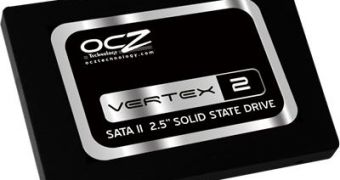The move to 25nm NAND flash has been touted by every manufacturer in the industry as one of the greatest improvements brought to solid state disks design since their introduction, but, as OCZ has found out, not everything is as advertised, as after the transition to 25nm, the company has started receiving numerous complains regarding some of their SSDs.
The main issues that users witnessed had to do with missing storage space and decreased performance when compared to their 34nm counterparts.
More specifically, Vertex 2 E 120GB drives that are built using 25nm Flash provide only 115GB of storage space to their users and are slower in some benchmarks than the previous version of the drive.
The change in storage capacity is not advertised in any way on the product's box or on OCZ's website, so this caused an outrage in OCZ's forums, leading many to complain about their recently purchased SSDs.
To make matters worse some users also noticed a drop in performance, especially when sequential writes are involved.
According to an official response posted by OCZ, the cause of those issues is the way the SandForce controller used inside the Vertex 2 drive works, and the decreased durability of 25nm flash.
Compared to the 5000 writes/empties cycles supported by 34nm flash, 25nm NAND can only withstand 3000 writes/empties, leading the DuraCell technology in the SandForce controller to increase the space allocated to over-provisioning in order to maintain the drive's reliability.
“The capacity change you are seeing on drives under 180GB is due to RAISE, we are not falsely advertising the drives, the overall capacity of the NAND has remained the same; RAISE capacity has changed though which does result in a slight increase of OP,” reads one response from an OCZ official.
Lately, availability of 34nm NAND has been scarce as the industry is moving towards the less expensive 25nm technology.
As a result, a wide series of SSDs based on the SandForce controller are expected to be affected by the same issues as those encountered by OCZ's drives as 34nm NAND stocks are depleted. (via Nordic Hardware)

 14 DAY TRIAL //
14 DAY TRIAL //